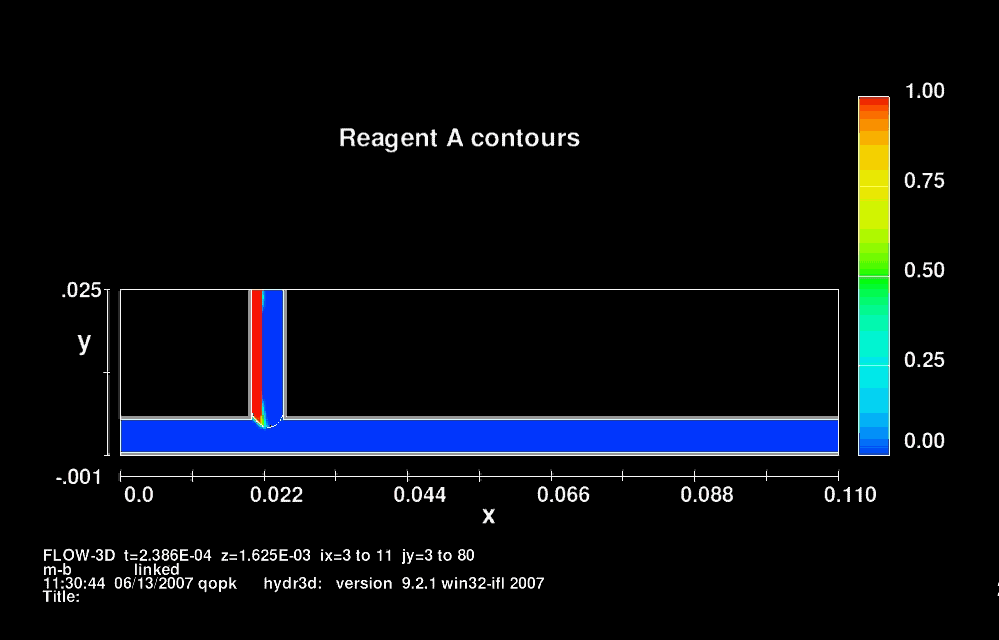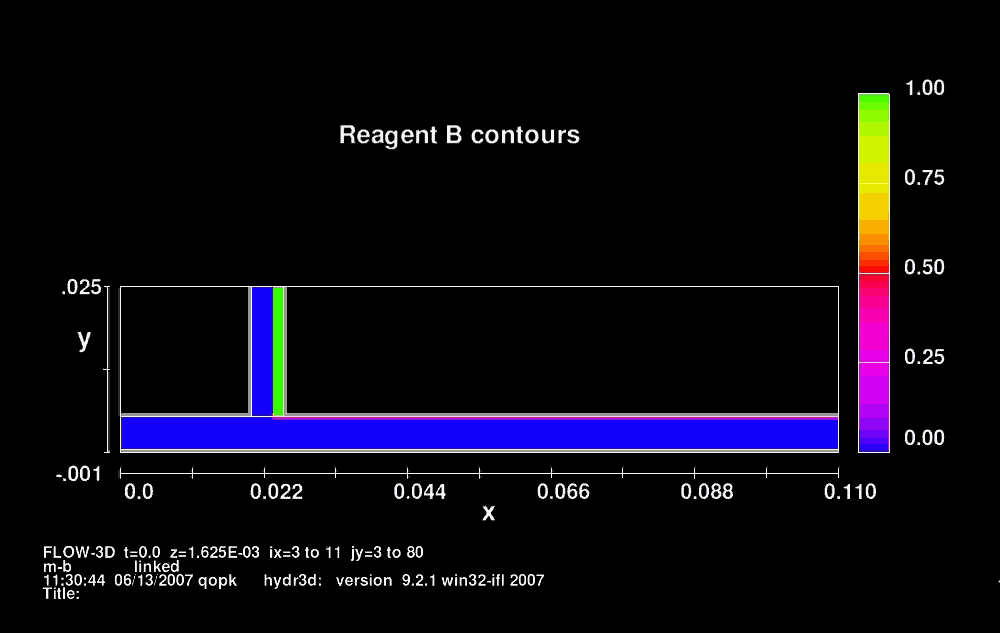T-Junctions
In T-Junctions, the disperse phase and the continuous phase are injected from two branches of the “T.” Droplets of the disperse phase are produced as a result of the shear force and interfacial tension at the fluid–fluid interface.

This system has microchannels with 50x50 μm2 cross sections and hydrophobic surfaces fabricated using rapid prototyping in polydimethylsiloxane (PDMS).

Comparison of FLOW-3D results with experimental results taken from Helen Song, Joshua D. Tice, and Rustem F. Ismagilov, "A Microfluidic System for Controlling Reaction Networks in Time," Angewandte Chemie International Edition 20003, 42 , No.7


Formation of uniform
droplets out of multiple aqueous streams. The
left animation shows the mixing pattern of
reagent A; The right animation shows the mixing
pattern of reagent B.

